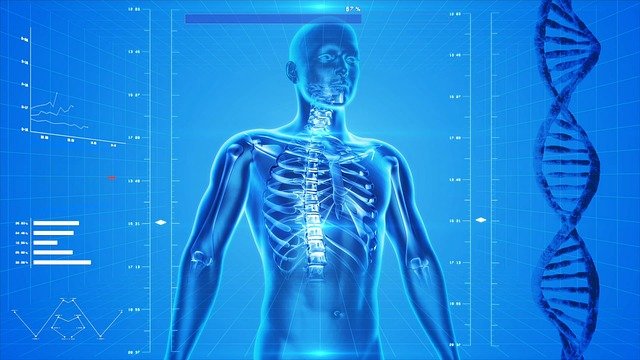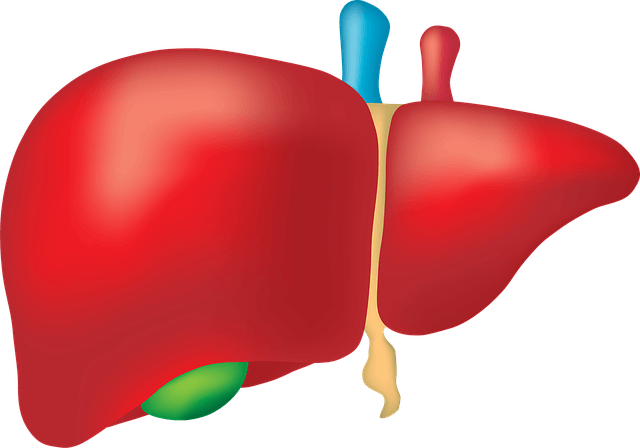Just a few years back, everyone was wondering about the growth of AI but in no time, it has managed to gain popularity. Various demands and the combinations of other events have helped AI to become more than just the fad.
As a whole, AI is basically a science which mimics human-like possibilities whereas, machine learning is one of the subsets of AI. Machine learning helps computers to learn and improve without any explicit programming. It lets machines to access the data to find the patterns for making a better decision. Machine learning is used with the primary aim of making computers learn with no human assistance and to adjust the actions accordingly.
When it comes to the application of machine learning then different fields such as healthcare, financial services, government, marketing, transportation and others are using it. In this article, we will be going to discuss how machine learning has helped health industry but before jumping into that, let’s first discuss the various algorithms which are used in machine learning for making reliable predictions.
Read Machine Learning- The Future of Technology to get deeper insights into the Machine Learning; or, you can explore all the concepts of machine learning by building numerous real-world projects with Machine Learning course.
Machine Learning Algorithms

These algorithms are divided into categories based on their purpose. Broadly, there are 3 main categories i.e. Supervised Learning, Unsupervised Learning and Reinforcement Learning.
Supervised Learning
It is also known as Learning from Exemplars. In this type of algorithms, humans act as a teacher to make computer programs learn the correct answer and analyze the patterns for accurate predictions. This training process continues until the model achieves a desired level of accuracy.
Furthermore, it is classified into two types i.e. Classification and Regression. Classification is used for predicting answers in Yes or No. For instance, is this tumor cancerous? Or is there the possibility of arrhythmia? Whereas, Regression is used for predicting answers such as “How much” and “How many”. Examples of Supervised Learning Algorithms are Nearest Neighbor, Support Vector Machines (SVM), Linear Regression, Naive Bayes, Neural Networks and others.
Unsupervised Learning
Contrary to the supervised learning; here, there are no teachers at all. Unsupervised learning techniques classify the data by finding the similarities between the input data. These algorithms are useful in cases where humans don’t have any knowledge about the data. It is used for clustering population of different groups and its examples are Apriori algorithm, K-means clustering, association rules and others.
Reinforcement Learning
It helps the machine to make specific decisions. In this, the machine is exposed to an environment in which it trains itself by using the trial-and-error method. In case of a wrong answer, the machine is informed but is not informed how to correct the answer. It explores various possibilities until it finds the correct answer; its examples are Q-Learning, Deep Adversarial networks and others. Reinforcement learning is widely used for self-driving cars, robotic hands and board games like chess applications.
You can read Machine Learning Algorithms to know more details about different types of algorithms which are widely used in Machine Learning.
Machine Learning and Healthcare

In recent years, healthcare has become a serious concern for almost everyone. Despite of improvements in the technologies, correct and accurate diagnosis of the certain condition is still difficult until a certain health condition becomes evident. In the world, where everyone is realizing the importance of preventive health checkups, machine learning is becoming the fast-growing trend. It plays a pivotal role in not only identifying the disease but also helping medical experts to analyze the data more accurately by analyzing the trends from previous data.
Currently, machine learning programs are used in several hospitals and diagnostic centers for storing the data and recognizing the pattern. These techniques analyze health records which contain all the patterns and data sets, then pattern recognition is used for predicting the accurate diagnosis and further planning of the treatment. Machine learning application includes chatbots for speech recognition to identifying a patient’s symptoms; in oncology for determining cancerous tissues; in pathology for identifying diseases based on the analysis made from blood, urine or saliva; for identifying rare diseases by facial recognition and others.
Here are some Medical Conditions which Machine Learning can predict with high accuracy!
1. Diabetes
It is a disease in which blood glucose level of our body becomes too high causing sundry of problems. Now, it has become an epidemic affecting millions of people all across the world.
As of now, several algorithms have been developed for diagnosing diabetes such as Naive Bayes, support vector machine, decision tree and others. Among all, Naive Bayes offered the highest accuracy i.e. 95% for diagnosing diabetes and a majority of others showed the accuracy between 65% -85%.
Source: http://file.scirp.org/Html/1-9601348_73781.htm
2. Liver Diseases

It consists of certain conditions which affect the liver ultimately, causing liver impairment. These diseases are the most trickiest ones to diagnose. Because of its subtle symptoms, early diagnosis of liver disease in a majority of the cases becomes difficult.
Today, various algorithms of machine learning are used to diagnose and classify liver diseases such as alcoholic liver disease, primary hepatoma, liver cirrhosis and cholelithiasis. These algorithms are support vector machine, linear discriminant analysis, quadratic discriminant analysis, Mahalanobis and various others.
Another paper published by M. Fatima and M. Pasha shows the significance of FT Tree Algorithm over other algorithms for diagnosing liver disease. According to this study, FT Tree Algorithm offers up to 97% of correctness in diagnosing liver diseases.
3. Arrhythmia
Arrhythmia is referred to an irregular heartbeat meaning that your heartbeat is too fast or too slow or having an irregular pattern. It occurs because of the malfunction of the heart’s electrical impulses. Arrhythmia can lead to chest pain, fainting or dizziness.
Researchers from Stanford University have published a research paper showing how they have used a convolutional neural network for detecting the broad range of distinct arrhythmia from an ECG.
Source: https://stanfordmlgroup.github.io/projects/ecg2/
4. Pneumonia

It is an infection which inflames the air sacs of your lungs causing cough with phlegm or pus. Commonly, it may lead to fever, chills, difficulty in breathing and is also contagious.
A team led by P. Rajpurkar and J. Irvin from Stanford University have developed a 121- layer convolutional neural network which can process the chest X-ray to detect pneumonia. They have published the paper for the same stating that their model even exceeds the average radiologist performance for detecting pneumonia.
Source: https://stanfordmlgroup.github.io/projects/chexnet/
5. Gram Stains
Gram Stain is a staining method used for distinguishing the bacterial species into two groups i.e. gram positive and gram negative. In medical diagnosis, it is performed on body fluids such as blood, saliva, urine or others to diagnose an infection.
K. Smith, A. Kang and J. Kirby have published a research paper stating the use of the convolutional neural network (CNN) to classify the microscopic images of the stain into gram-positive bacteria, gram-negative bacteria or just the background without any bacteria. Their model has shown the accuracy of 92.5% and a specificity of over 93%. Majority of the errors were because of the stains of rare bacteria.
Source: https://jcm.asm.org/content/56/3/e01521-17
6. Alzheimer’s

Also known as senile dementia, Alzheimer’s is a neurodegenerative disease wherein, brain cells degenerate and eventually dies. Slowly, it impairs and then over the time it destroys the memory. Additionally, it can also affect other mental functions.
Some researchers from London have used data of Alzheimer’s from ADNI to develop a model which can successfully predict Alzheimer’s. It does so by analyzing the MRI scan of a healthy brain, scans of a brain with mild impairment and scans of a brain having Alzheimer’s disease.
Source: https://arxiv.org/abs/1502.02506
7. Breast Cancer
Cancer is the second cause of death in the world while, breast cancer is the leading cause of death among women worldwide. In breast cancer, malignant tumors are developed in the breast and effects the surrounding tissues.
To counter this, already several algorithms of machine learning have been designed such as support vector machine, artificial neural network, K-nearest neighbor, decision tree and others. These algorithms are used to analyze mammograms or tissue slides for detecting breast cancer.
Now, researchers at Google have even developed a deep learning tool which can detect breast cancer with up to 99% accuracy. It analyzes the pathology slides and plays a significant role in reducing average slide review time. Here you can read the blog published by Google.
8. Lung Cancer

Lung cancer or pulmonary cancer is the leading cause of cancer-related death in the world. It is a type of cancer which results in uncontrolled cell growth in the lung’s tissue. If not controlled, lung cancer can even spread to the nearby areas and other body parts affecting its tissues.
Again, different algorithms have been proposed for detecting lung cancer. Among others, one of the most prominent ones is the neural-network based algorithm for detecting small cell lung cancer by analyzing CT Scans.
Source: https://ieeexplore.ieee.org/document/8294165
9. Autism
It is a developmental disorder which affects the nervous system leading to the impairment in the ability to communicate and interact with others. The early diagnosis of autism can play a crucial role to reduce the symptoms and supporting developmental learning.
There are several research papers which have already been published showing the effectiveness of machine learning for the diagnosis of Autism. A paper published by H. Abbas, F. Garberson and others has proved that machine learning is an effective method for detecting autism in children.
Source: https://www.ncbi.nlm.nih.gov/pubmed/29741630
In the meantime, if you are interested in designing machine learning algorithms for detecting and diagnosing different health conditions, then you can opt for “Applied Machine Learning for Health Care” course.
Concluding Remarks

The beauty of science lies in its ever-evolving nature which supports the human needs with every possible way. It’s true that with every innovation there was always a concern about the possibilities; but it’s also true that all the remarkable technologies as of now, have successfully overcome all the concerns.
When it comes to machine learning, it is an emerging technology. Regarding healthcare, it is still in its early phase of adoption by both the doctors and the public. However, despite all the concerns regarding reliability, accuracy, limited number of available data and others, it has a great potential to change the entire healthcare system to its entirety.
Companies worldwide are making significant efforts to bring machine learning in healthcare for common individuals. Although, after going by all the efforts, yet machine learning algorithms require continuous vigorous testing to implement it in real-world applications. Apart from the above-mentioned condition, there are various conditions where this technology is already being tested such as skin cancer, onychomycosis, dental cavities and many more. Furthermore, it also has the possibilities in chatbots, robotic surgery, drug discovery, automation and others.
So, there you go! What do you think about Machine Learning?